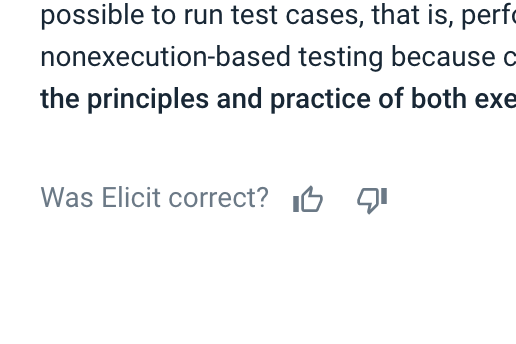We're Ought. We're going to answer questions here on Tuesday August 9th at 10am Pacific. We may get to some questions earlier, and may continue answering a few more throughout the week.
About us:
- We're an applied AI lab, taking a product-driven approach to AI alignment.
- We're 10 people right now, roughly split between the Bay Area and the rest of the world (New York, Texas, Spain, UK).
- Our mission is to automate and scale open-ended reasoning. We are working on getting AI to be as helpful for supporting reasoning about long-term outcomes, policy, alignment research, AI deployment, etc. as it is for tasks with clear feedback signals.
- We're building the AI research assistant Elicit. Elicit's architecture is based on supervising reasoning processes, not outcomes, an implementation of factored cognition. This is better for supporting open-ended reasoning in the short run and better for alignment in the long run.
- Over the last year, we built Elicit to support broad reviews of empirical literature. We're currently expanding to deep literature reviews, then other research workflows, then general-purpose reasoning.
- We're hiring for full-stack, devops, ML, product analyst, and operations manager roles.
We're down to answer basically any question, including questions about our mission, theory of change, work so far, future plans, Elicit, relation to other orgs in the space, and what it's like to work at Ought.


To clarify, here’s how I’m interpreting your question:
“Most technical alignment work today looks like writing papers or theoretical blog posts and addressing problems we’d expect to see with more powerful AI. It mostly doesn’t try to be useful today. Ought claims to take a product-driven approach to alignment research, simultaneously building Elicit to inform and implement its alignment work. Why did Ought choose this approach instead of the former?”
First, I think it’s good for the community to take a portfolio approach and for different teams to pursue different approaches. I don’t think there is a single best approach, and a lot of it comes down to the specific problems you’re tackling and team fit.
For Ought, there’s an unusually good fit between our agenda and Elicit the product—our whole approach is built around human-endorsed reasoning steps, and it’s hard to do that without humans who care about good reasoning and actually want to apply it to solve hard problems. If we were working on ELK I doubt we’d be working on a product.
Second, as a team we just like building things. We have better feedback loops this way and the nearer-term impacts of Elicit on improving quality of reasoning in research and beyond provide concrete motivation in addition to the longer-term impacts.
Some other considerations in favor of taking a product-driven approach are:
Risks with trying to do both are: